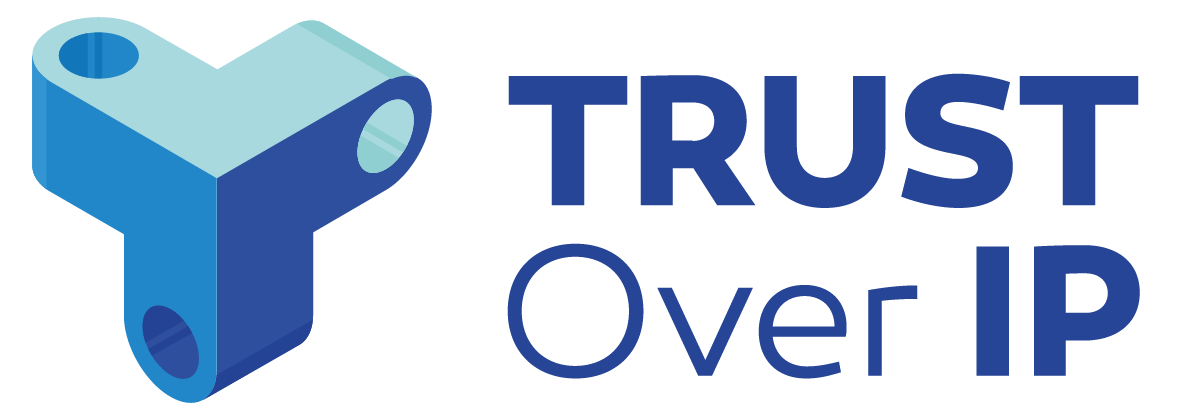Why Trust Over IP is even more profound than we thought
by Daniel Hardman (LinkedIn link), Principal Ecosystem Engineer, SICPA

I became involved with the self-sovereign identity movement in 2016, and I have been lucky enough to witness many of its milestones — the finalization of the VC and DID specifications, the launch of Sovrin and Hyperledger Indy, the advent of production deployments and serious interoperability, the invention of peer DIDs and KERI and BBS+ credentials, the implementation of the exciting communication technology now known as DIDComm…
In this list of exciting events, I’ve long felt that the launch of the Trust Over IP Foundation deserved special mention. I coauthored two of the first public papers about the Trust Over IP Stack. For me, the vision represented a first and best effort to articulate and focus the principles that undergird all our decentralized and self-sovereign ambitions.
Yet despite this enthusiasm, I’ve recently realized that I’ve been underestimating our potential impact. Surprising but true.
In January of 2021, I joined SICPA to work on the problem of digital cash — not cryptocurrency, but bits-and-bytes versions of a euro, a dollar, a rupee, a real. Of course I took with me all my love for decentralized identity, DIDs, credentials, governance, and peer-oriented protocols.
As I learned this new problem domain, I saw a need for undergirding trust infrastructure; digital cash and its ownership needs verification, much like verifiable credentials do. That meant I needed primitives analogous to identity’s verifiable data registries. I also saw the need for identifiers and connections, and atop them, rich protocols — similar to the credential-oriented ones I’d appreciated in identity, but now having a monetary focus. For example, we obviously needed a protocol for buying and selling, another for negotiating a price, another for putting a value in escrow… And of course the big vision for cash was a trustworthy ecosystem, quite similar to the ones I’d been advocating in identity.
The more I pondered, the strong the parallels and resonances became. Permeating this new stack of value was the same need for governance, the same need for privacy and oversight, and the same opportunity to reset power imbalances by emphasizing peers and decentralization.
I looked at the Trust Over IP stack diagram with fresh eyes. And I saw that, like the funny English expression, “Can’t see the forest for the trees,” perhaps our perfectly reasonable focus on the details of credential implementation was distracting us from a profound generalization that the name of our foundation, “Trust Over IP,” had suggested all along:
We are about trust over underlying tech primitives — not just about identity or credentials.
It is true that credentials are a profound innovation — one that we’ll need in a digital cash stack, for sure. And it’s also true that identity is a key enabler of trust. But money taught me that these key components are necessary, not sufficient. With money, I also want verifiable mechanisms like escrow and insurance. That’s true even (perhaps especially) when I’m transacting with a faceless stranger.
I also pondered what perspective I might have acquired if my job shift had been to the problem of fake news, or education, or supply chain integrity, or healthcare, or academic and scientific research. And I realized that the same realizations would likely have surfaced from any of those perspectives. Each of these fields aspires to a dynamic and ecosystem. Each needs an expansive catalog of composable workflows that produce and consume trust. Such workflows depend on secure connectivity, which in turn derives from data formats, cryptographic algorithms, public commitments, and so forth. They all need governance, from the top of the stack to the bottom. And in all cases, trust is an emergent property of combining these patterns carefully.
That led me to imagine a revised version of the Trust Over IP stack:

This isn’t actually much of a departure from our original formulation; it just focuses more on the principles that characterize a layer, rather than on the specific mechanisms we might assume. And I hope it lets us see the forest for the trees. 🙂
I don’t know that my diagram is all that profound or unique to me. Other smart people in the space have begun saying similar things, and perhaps we’ll find a different way to explain that works even better. But I do think that experience and time are having a beneficial effect on all of us. The Tech Stack Working Group of Trust Over IP Foundation recently began debating a revision to our framing of this stack, and I am thrilled to hear many profound generalizations emerging from the discussions. The world desperately needs trust over IP, and I think we’re well on our way to delivering it.
